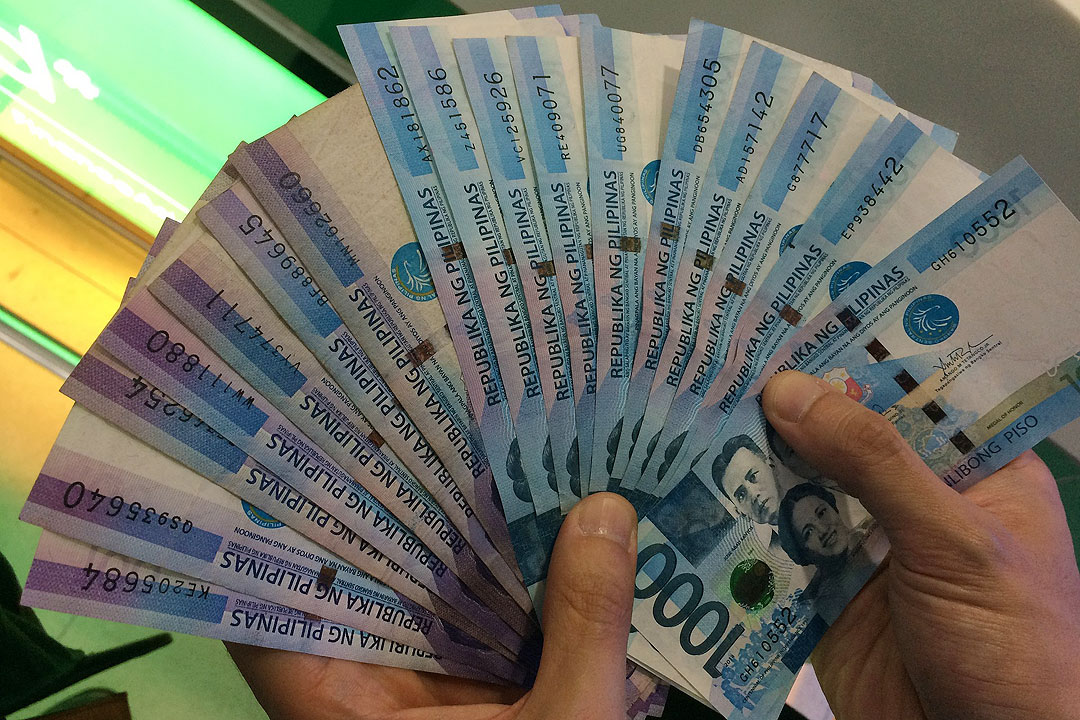
By Katherine K. Chan
THE Philippine banking sector’s nonperforming loan (NPL) ratio dropped to a three-month low in June even as banks continued to expand their lending portfolios, Bangko Sentral ng Pilipinas (BSP) data showed.
Data from the BSP showed banks’ gross NPL ratio eased to 3.34% in June from 3.38% in May, and 3.51% in the same month last year.
This was the lowest NPL ratio in three months or since the 3.3% in March.
Loans are considered nonperforming once they are unpaid for at least 90 days after the due date. These are deemed as risk assets since borrowers are unlikely to pay.
The amount of nonperforming loans inched up by 0.5% to P530.29 billion in June from P527.45 billion in May. Soured loans also jumped by 5.5% year on year from P502.42 billion.
The total loan portfolio of the banking system stood at P15.88 trillion as of end-June, up by 1.69% from P15.62 trillion at end-May and up by 10.9% from P14.32 trillion a year ago.
Reinielle Matt M. Erece, an economist at Oikonomia Advisory and Research, Inc., said the impact of policy rate cuts are starting to spill over to bank lending rates.
“We have seen lower interest rates which may make it easier for borrowers to repay their obligations,” he said.
The central bank has so far lowered borrowing costs by a total of 125 basis points (bps) since it began its easing cycle in August last year. In June, the Monetary Board cut by 25 bps to bring the benchmark rate to 5.25%.
“The slight easing in the NPL ratio may reflect stable borrower repayment capacity, supported by low inflation, steady employment, and still-resilient domestic demand,” John Paolo R. Rivera, a senior research fellow at the Philippine Institute for Development Studies, said in a Viber message.
Mr. Rivera also attributed the softening ratio to universal and commercial banks’ tighter lending policies.
“However, a larger reason for the NPL easing is the significant increase in loan volume for the month which grew by about 12% year on year,” Mr. Erece said. “This caused the ratio of nonperforming loans to overall loans to decrease as the denominator increased significantly.”
Meanwhile, past due loans increased by 1.75% to P670.5 billion in June from P659 billion in May. Year on year, it went up by 9.17% from P614.17 billion.
Past due loans as of June accounted for 4.22% of the system’s total loan portfolio, unchanged from end-May but lower than the 4.29% a year ago.
Restructured loans, on the other hand, slipped by 0.44% to P312.03 billion in June from P313.39 billion in May, but rose by 6.27% from P293.62 billion in June 2024.
It took up less of the industry’s total loan portfolio at 1.96% from 2.01% in the previous month and 2.05% in the same period last year.
Banks’ loan loss reserves edged up by 1.42% to P505.91 billion in June from P498.83 billion in May and by 5.5% from P479.46 billion a year earlier.
Loan loss reserve ratio in June was unchanged from May at 3.19%, but lower than the 3.35% in the same month in 2024.
Meanwhile, lenders’ NPL coverage ratio, which gauges the allowance for potential losses due to bad loans, inched up to 95.4% from 94.57% in May. Year on year, it slipped from 95.43%.
“A policy rate cut later this month could lower borrowing costs, encourage loan growth, and help more borrowers service their debt,” Mr. Rivera said.
BSP Governor Eli M. Remolona, Jr. said a rate cut is “quite likely” at the Monetary Board’s next meeting on Aug. 28.
“However, faster credit expansion also means banks will need to manage credit risks carefully to prevent a rebound in NPLs,” Mr. Rivera said.
Mr. Erece, on the other hand, said banks’ bad loan ratio may continue to narrow in the next few months.
“Apart from the expected impacts of rate cuts, we may also expect a rise in borrowing brought by the end of the year spending,” he said.